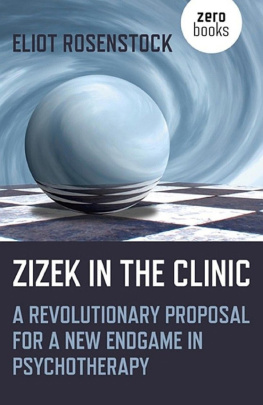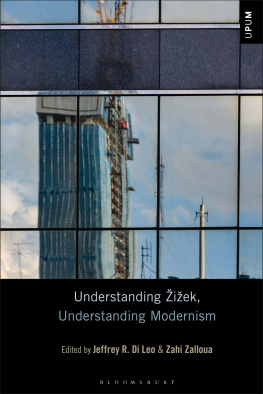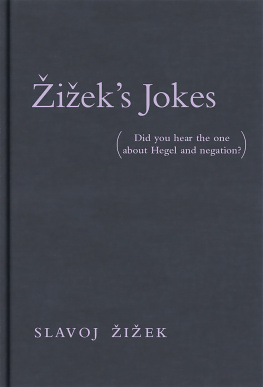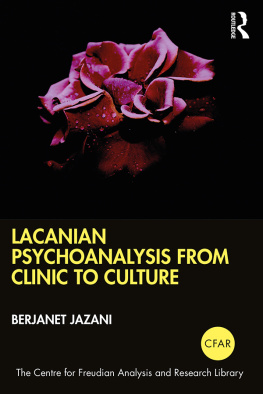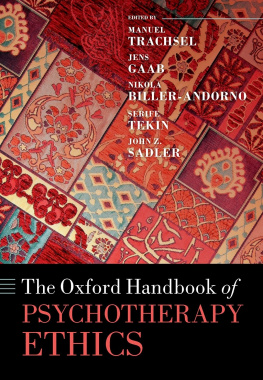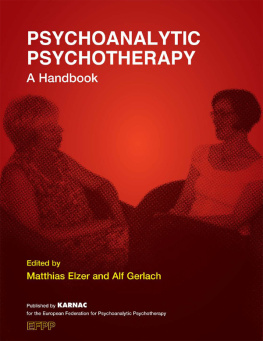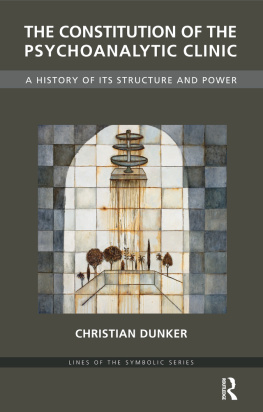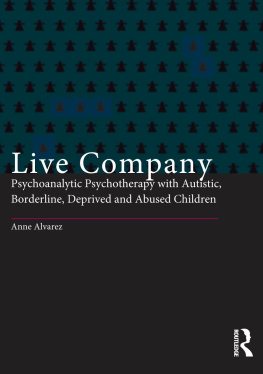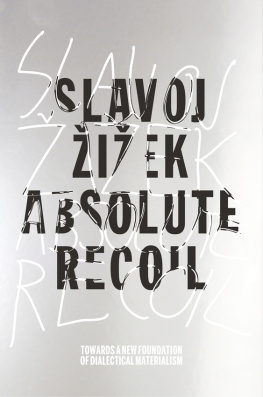First published by Zero Books, 2019
Zero Books is an imprint of John Hunt Publishing Ltd., No. 3 East St., Alresford, Hampshire SO24 9EE, UK
www.johnhuntpublishing.com
www.zero-books.net
For distributor details and how to order please visit the Ordering section on our website.
Text copyright: Eliot Rosenstock 2018
Eliot Rosenstock is a Registered Associate Marriage and Family Therapist IMF95864
ISBN: 978 1 78535 925 5
978 1 78535 926 2 (ebook)
Library of Congress Control Number: 2017963699
All rights reserved. Except for brief quotations in critical articles or reviews, no part of this book may be reproduced in any manner without prior written permission from the publishers.
The rights of Eliot Rosenstock as author have been asserted in accordance with the Copyright, Designs and Patents Act 1988.
A CIP catalogue record for this book is available from the British Library.
Design: Stuart Davies
Printed and bound by CPI Group (UK) Ltd, Croydon, CR0 4YY, UK
We operate a distinctive and ethical publishing philosophy in all areas of our business, from our global network of authors to production and worldwide distribution.
Contents
Special Thanks:
Dion Smotherman
Amy Ezell
Everyone in the Freud Group
Cristina
Introduction
A Zizekian Vanishing Point
Psychotherapy needs an end goal or else it is just two people in the room talking. Immediately we are faced with the problem of why when talking about psychotherapy. The purpose of this book is to propose a new vanishing point. In other words, what is the point on the canvas toward which the painter organizes the angle of the landscape? The new vanishing point is this: a psychoeducated person with high insight into their own functioning with an algorithmic response process with which to respond to events on an individual microcosmic as well as a systemic level. The goal is to help move human beings toward a position to withstand the emotional turmoil of the contemporary global capitalist value exchange markets tug on the psyche along with providing tools for every other facet of contemporary existence. The sublated individual is one who knows how external power and general systemic social structures are internalized and how the individual psyche interacts with them. In other words, if you want to surf, you must know how a wave pushes and pulls you, how desire is manufactured, where pain comes from, what is truly meaningful, what the nature of that meaning is and how that meaning should be approached.
As Jacques Lacan articulates on this phenomenon of modern manipulation of the psyche by contemporary capitalism, We are becoming increasingly familiar with the functions of an agent (of castration). We live at a time at which we know what this conveysfake stuff, advertising stuff, things that are there to be sold. But we also know it works this way
New information we are exposed to is processed and made sense of by sensory inputs that are part of our own body, which we cannot fully control due to the nature of simultaneous This intuition to lecture patients with psychosis is often glanced over, but it is the intuition which carries with it the potential for a contemporary Lacanian psychotherapy, which Lacan utilized for his entire career while only cursorily acknowledging it.
Lacan knew that for the psychotic he needed to provide symbolic order. It was not enough for Lacan to have a psychotic on a couch, looking up and speaking into the void, calling out to the Big Other. Lacan instinctively understood that they needed knowledge; that he would have to put himself in the University Discourse; that he would have to act as someone who held some information about what exactly truth was.
Carl Jung once stated, Thank God I am Jung and not a Jungian. Lacan echoed a similar sentiment, You can be Lacanian if youd like, I myself am Freudian. Despite Lacans brilliant theoretical insights, he was at heart a Freudian analyst. Client lying back on the couch, Lacan interposing when necessary to provide an insight into a double meaning, trying to stay in the analytic discourse, the discourse Lacan insists is best for the analyst to speak to the patient in because, unlike the Master or University Discourse, the Analysts Discourse cannot lack because the Analysts Discourse never assumes to know.
But why does Lacan then, during his entire career, deliver lectures on the nature of the unconscious and the psyche? What then, is the purpose of this investigation if it is assumed that all new knowledge itself is some form of truth? This exchange between a colleague and a client was recently shared with me:
Therapist: Why do you cry?
Child: Because I dont understand.
This is a child with behavior problems who, in addition to crying in therapy, cries throughout the day with minor provocation. What is the role that psychoeducation could play in this scenario, and specifically, Slavoj Zizeks style of Lacanian investigation into love, life and commodity fetishism? The Other for a child is at odds with the ideal Other; it is the Other with rough edges, the flat, warm Coca-Cola, versus the advertisement that shows us how to Enjoy Coke! Who is more under the tyranny of the superego injunction to enjoy than the child grasping for attachment to compensate for a broken home, the disembodied organ without a body, as Zizek describes the death drive? What is authority without a function inside of the family for a child?
A classic Lacanian analyst doesnt provide answers, championing small gains the client builds through speaking to Big Other as they throw out master signifiers. Unless we define happiness in a rather sad way, namely that it is to be like everyone else, which is what the autonomous ego could be resolved intonobody, it must be said, knows what it is. But let us think back to Lacans intuition at the institution. He gave credit to the institutionalized to be able to cognitively understand his teachings, and that his teachings would somehow better them. What is it that draws people to Lacan in the modern era? It is the idea that psychoeducation can provide depth and meaning, not unlike the function of psychotherapy for a depressed child. We can psychoeducate a child on why their friends arent perfect (arent object ideals); we can revisit with them how they repeat these ideals and it causes them pain. In the institutionalized psychotic, the repeating scenarios matched up against the ideal self and values of the client can be rationalized.
Dialectics can be formed with any client: The internal values of the client, with event. Where these come together and where they do not, parallaxes can be mapped. A Hegelian-Lacanian topology is cognitively mapped. The client will often seem as if they suddenly click into place, like they suddenly have a pathway forward. This is not done with psychoanalysis, but with the psychoeducational narratives in the way Lacanian discourse was originally intuited to work by Lacan in the institution, and by Zizek in front of the audience.
So, what is this book and what is it not? This book is a description of the toolbox Ive crafted as a psychotherapist which contains a variety of ways in which the Zizekian mode of investigation into psychic phenomena can be utilized in the clinical setting. This book is not a book advocating a specific modality of therapy, nor is it a book suggesting the superiority of psychotherapy over psychoanalysis. This book is an inside look into the therapeutic profession meant for layfans of philosophy and psychotherapists of every model, and a description of the intrinsic closing of lack or distance between the subjects split sense of identity, and how it is different to intrinsic analytic models. This book

